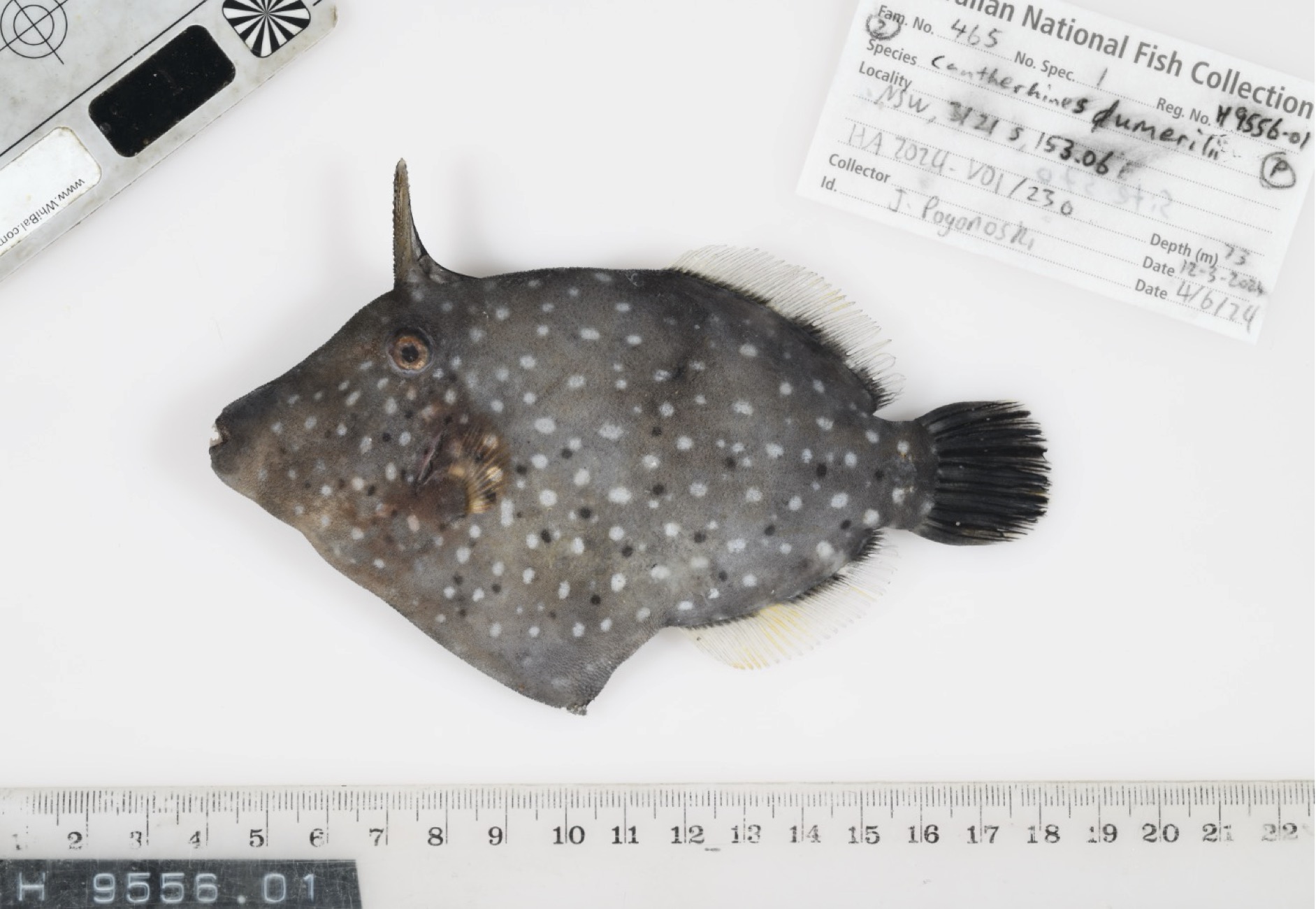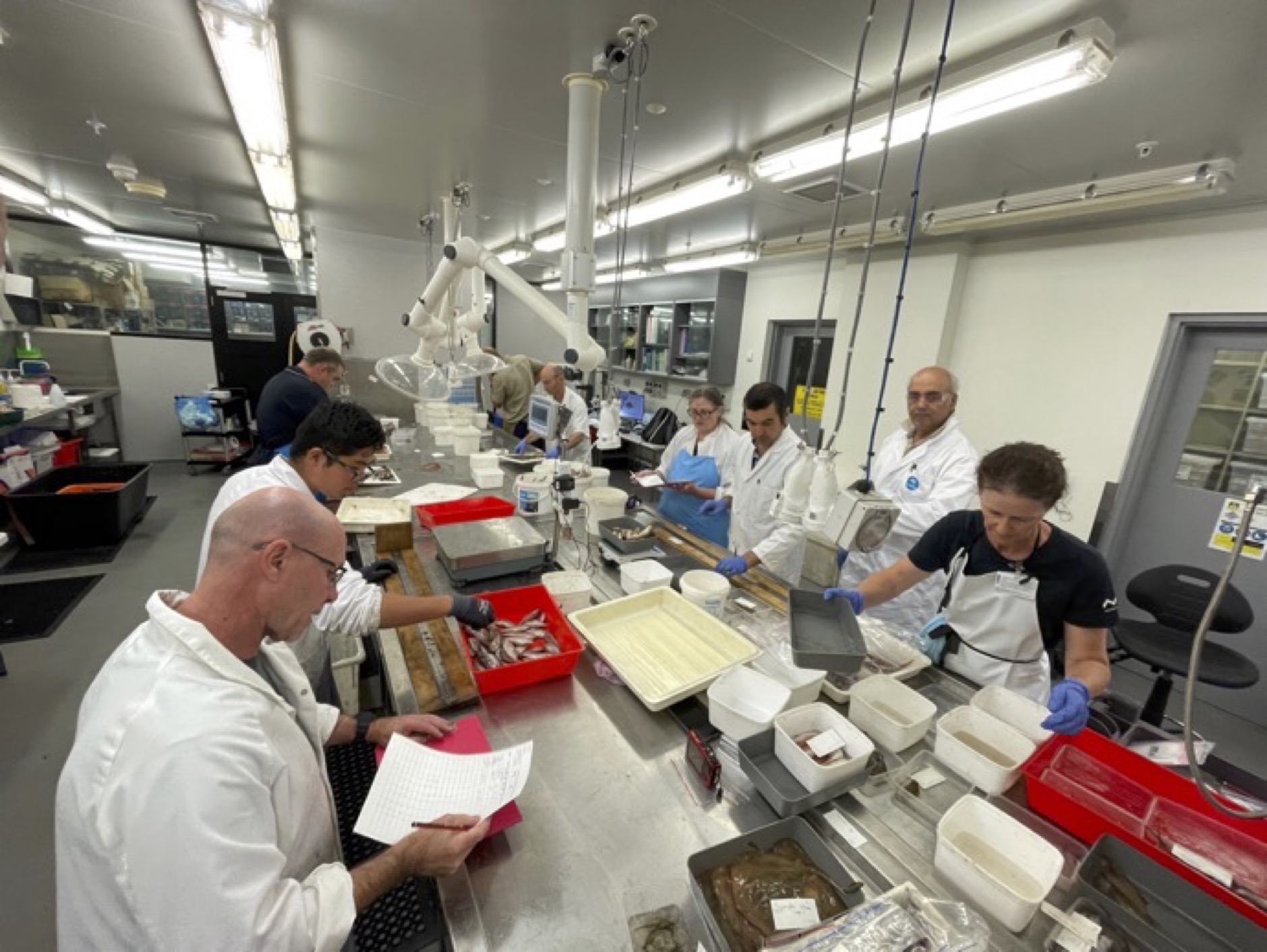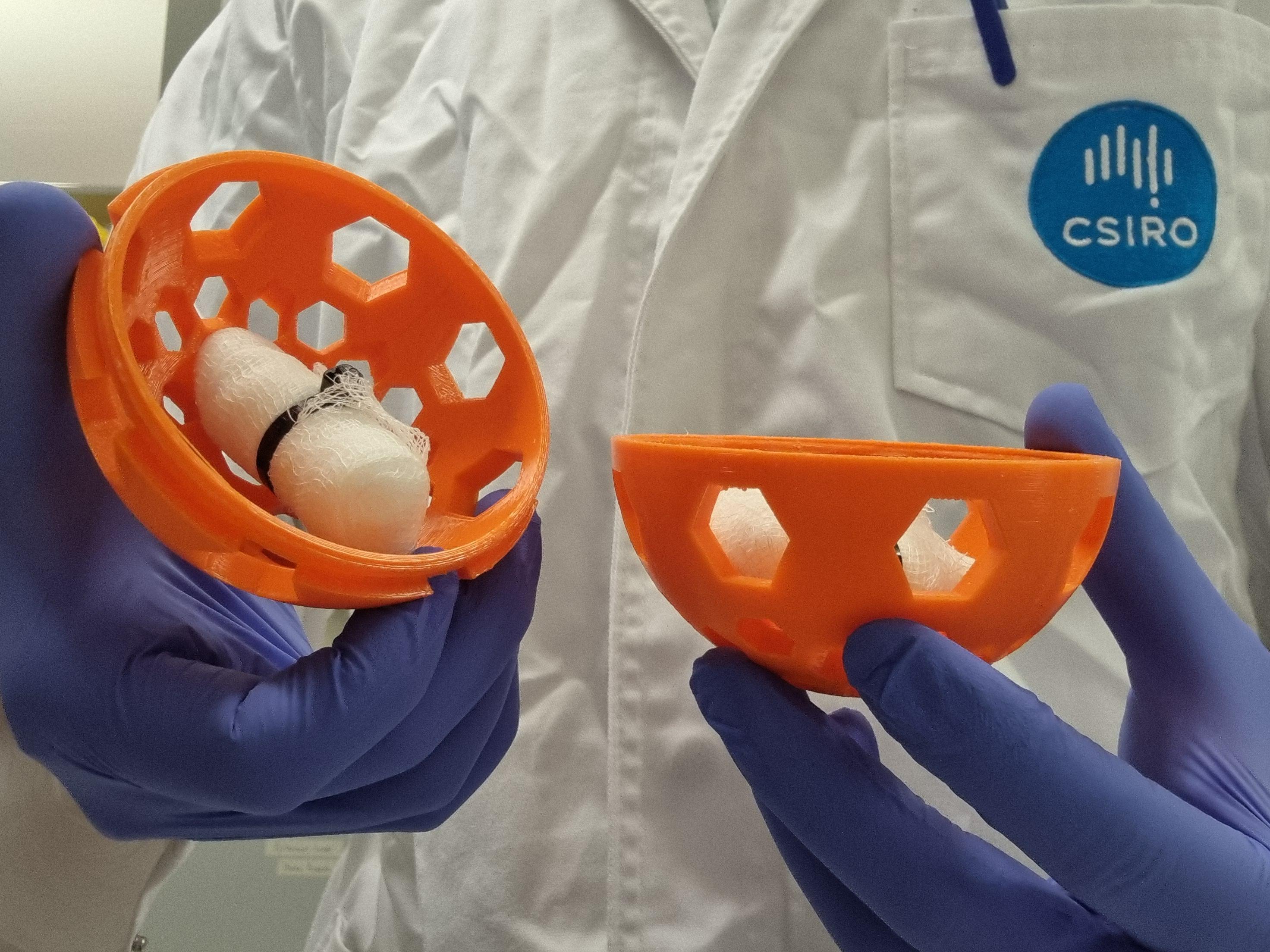Some understudied species and thriving biodiversity levels have been identified in a project mapping the marine life of the seabed habitats in southern Queensland and north-central New South Wales.
Ocean trawls, multi-beam sonar, photographs, video footage and environmental DNA (eDNA) samples gathered over the past two years are providing a better picture of seabed habitats and marine life in southern Queensland and north-central NSW.
The data gathering effort is part of a four-year $2.1 million FRDC-funded project (2020-026) focusing on areas with a soft sediment sea floor – the types of areas where commercial trawling typically occurs.
This collaborative project is led by CSIRO, together with the Queensland and New South Wales state fisheries agencies, the Queensland Museum and the Australian Museum. Project leader is CSIRO senior research scientist Dr Rodrigo Bustamante.
Rodrigo says the project will inform an evidence-based understanding of the effects of trawling on soft-sediment habitats in the study region. Comparing the same habitat types across fished and unfished areas, and using this data to inform risk assessments, will help to ensure that management of trawl fisheries is based on like-for-like comparisons

Evidence of life
Rodrigo highlights non-invasive sampling techniques being used, such as sonar, video footage, and eDNA gathered from the water. While these techniques will be an increasing part of future research, targeted and limited biological sampling of animals and plants at selected sites is a critical part of the current project.
“The project aims to provide baseline information about the impacts of different kinds of spatial marine management, so we need to assess open areas and different types of parks and reserves to understand how they are doing,” Rodrigo says.
“We collect the minimum samples needed to provide scientifically robust and representative evidence, while also minimising the impact,” he adds.
Thousands of specimens have been gathered in catch composition sampling from 130 trawls (80 in NSW and 150 in southern Queensland), which are now being assessed by taxonomic teams.

Analyses of the specimens is not yet complete, but to date 505 species of fish and 348 species of invertebrates have been identified in the southeast Queensland samples. In NSW 221 fish species have been identified, with 68 species of invertebrates.
Rare finds
Rare species identified included the Furry Coffinfish (Chaunax endeavouri) Tasmania Numbfish (Narcinops tasmaniensis) and Lord Howe Butterflyfish (Amphichaetodon howensis).
“Three specimens of Bullhead Scorpionfish (Scorpaena bulacephala) were also collected off Broken Head, New South Wales,” says Rodrigo.
“It is the first time this species has been recorded off the Australian mainland. It has previously only been found southeast of Lord Howe Island.”
This will allow the presence of marine organisms to be identified from DNA they shed into the water without the need to collect further specimens.
Rodrigo highlights eDNA sampling for cross-referencing with physical samples as “an opportunistic add-on” to the project, including the development of a new sampling kit. 3D–printed balls fitted with fibreglass or cotton wool filters are added to trawl nets, collecting eDNA along with marine specimens.

Once all the project data has been gathered and analysed it will be used to complete quantitative risk assessments for seabed habitats and bycatch species. This will allow the project team to develop and evaluate alternative management options for sensitive habitats and bycatch species.
Related FRDC Project
2020-026 Habitat ecological risk assessment for eco-regions with high trawl footprints, in southern Queensland and northern NSW





